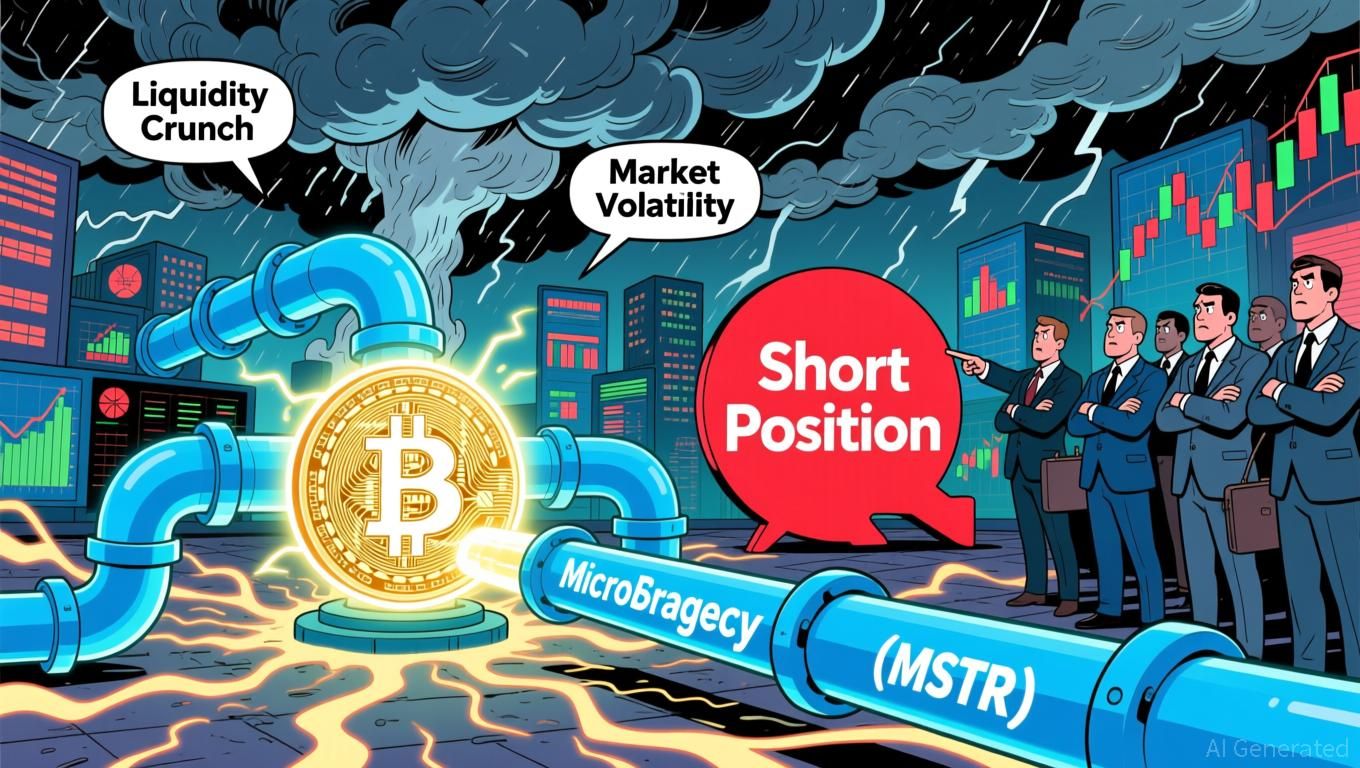Bitcoin Updates Today: The Future of Bitcoin in 2026 Hinges on Federal Reserve's Actions on Inflation
- Bitcoin's 2026 recovery depends on Fed inflation policy linked to CPI, PPI, and PCE metrics. - Persistent CPI/PCE inflation above 2% delays rate cuts, increasing Bitcoin's opportunity cost as non-yielding asset. - PPI input cost trends influence manufacturing pricing, prolonging inflation risks for Bitcoin's bearish environment. - PCE's alignment with consumer behavior shifts could accelerate Fed rate cuts, boosting Bitcoin's appeal as monetary easing hedge. - Housing/energy inflation volatility and Fed
Bitcoin's recent price volatility has led to a pressing question: Is a recovery on the horizon for the cryptocurrency? More analysts and investors are now relying on established economic signals—especially inflation measures like the Consumer Price Index (CPI), Producer Price Index (PPI), and Personal Consumption Expenditures (PCE) price index—to
The CPI, the most commonly cited inflation gauge, tracks shifts in the average prices paid by households for goods and services
The PPI, which measures price changes at the production stage, provides additional perspective

Looking beyond headline numbers, inflation trends in specific sectors are also important. For example, housing and energy prices—which together account for 55.4% of the CPI—remain persistently high
Investors should also pay attention to how inflation interacts with broader economic sentiment. While the Fed’s 2% inflation target remains out of reach, the journey toward that goal will shape the landscape for Bitcoin. If both PCE and CPI approach 2% by mid-2026 and PPI signals stable production costs, the Fed may shift toward lowering rates, which could benefit riskier assets. However, if inflation control falters—such as a renewed rise in service sector prices—relief could be delayed, keeping Bitcoin under pressure.
In summary, Bitcoin’s chances for recovery depend on three main elements: how quickly CPI and PCE inflation slow, the direction of PPI costs, and the Federal Reserve’s reaction to these trends. As the central bank works to balance price stability with employment goals, Bitcoin’s prospects will remain closely linked to the broader economic picture. Investors should keep a close watch on these indicators, as they are likely to shape the next phase of Bitcoin’s unpredictable journey.
Disclaimer: The content of this article solely reflects the author's opinion and does not represent the platform in any capacity. This article is not intended to serve as a reference for making investment decisions.
You may also like
Bitcoin Updates: Hybrid Investment Strategies Drive Surge in Bitcoin Purchases Amid Ongoing Market Slump
- Cardone Capital buys 185 BTC for $15. 3M at $82,500/coin, expanding its real estate-crypto hybrid portfolio amid crypto market weakness. - Bitcoin falls below $90K for first time in seven months as U.S. ETFs lose $3.79B in November outflows, with BlackRock's IBIT accounting for 63%. - Grant Cardone's hybrid model contrasts with pure-play crypto treasuries, using real estate cash flow to fund Bitcoin accumulation and claiming $125M in year-one EBITDA. - Market fears a prolonged bear market as Bitcoin drop

Bitcoin Updates: MSTR Takes on Crypto Hedging Burden, Revealing Weaknesses in the Market

Bitcoin ATM Firm Weighing $100 Million Sale Following Money Laundering Charges
Port3 Network token crashes over 80% on reports of possible exploit